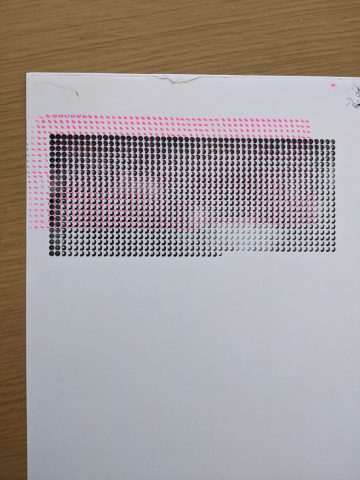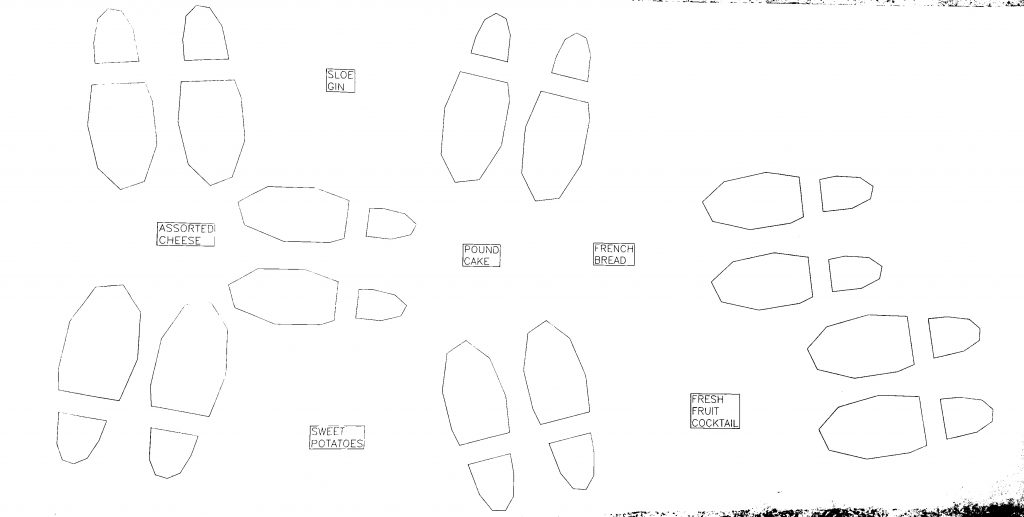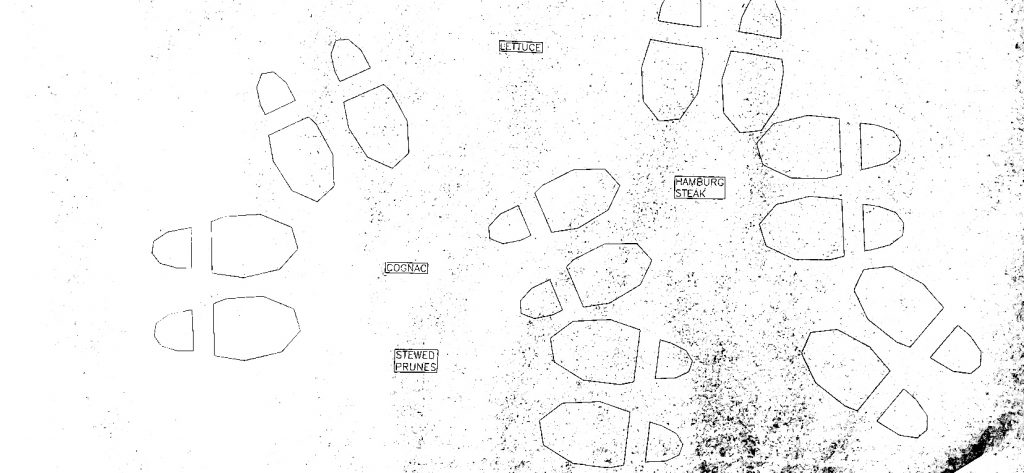Party Planning Floor-mat
I’m a fan of parties in an abstract sense of the word party: any sort of community event. For this project, I was inspired by Nick’s kissing tiles in the sense of treating the objects of these algorithms personally and personifying the interactions between them. Distributions of people across a space shouts nothing other than a lovely party.
At each point whose location was determined by poisson disc sampling (an implementation stolen from here), I placed a pair of shoes. Their curves are a vertically-stretched version of a parametric cranioid curve that Golan sent me to use for my generative people’s heads. A rectangular slice is taken out near the convexity to look more like a shoe-print. Given this set of points, I obtained a voronoi diagram with SciPy and placed a special party object at each node that fell within the party space, but not too close to any other party object. I oriented each pair of shoes to face their nearest party object. These party objects could be any sort of thing: televisions, tables, chairs, but many if not most parties are centered around food, so I placed a marker for unique food at each party object location. The names of these foods were taken from dariusk’s corpora project, which has a list of “the top 1000 most appearing menu items from the 1850s to today from the New York Public Library’s ‘What’s on the menu?’ project.” I rendered a random choice from this list in the Hershey font library I’ve been using.
Here are a few generated .svg’s:

and a couple plotted on the USCutter MH871-MK2 (the feet are full-size, the paper is ~30 in. x 75 in.):






